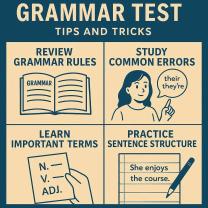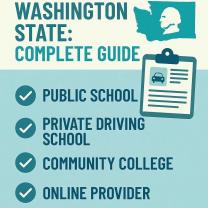How to teach the alphabet and make letters stick?
Teaching the alphabet can be made engaging and effective through various educational strategies that cater to different learning styles. Here are some methods to make letters stick:
1. Multisensory Approach:
- Sensory Activities: Use hands-on activities involving touch, sight, and sound. For instance, tracing letters in sand, using sensory trays, or making letters with playdough.
- Singing and Rhymes: Use catchy songs or rhymes that highlight each letter. This helps in auditory and verbal retention.
2. Visual Aids and Games:
- Flashcards and Posters: Display colorful posters or flashcards with letters and associated images to reinforce visual memory.
- Alphabet Games: Engage in games like "I Spy," letter scavenger hunts, or alphabet puzzles to make learning interactive and fun.
3. Storytelling and Books:
- Alphabet Stories: Use stories that focus on each letter or contain characters whose names start with specific letters. This aids in contextualizing letters.
- Alphabet Books: Utilize picture books specifically designed to teach the alphabet.
4. Repetition and Practice:
- Repetition: Practice writing, saying, and identifying letters regularly. Consistent exposure helps reinforce memory.
- Letter Recognition Activities: Engage in activities like letter sorting, matching uppercase and lowercase letters, or letter hunts.
5. Technology and Apps:
- Educational Apps: Use interactive apps or online games that focus on teaching the alphabet. Ensure moderation and supervision.
6. Incorporating Movement:
- Kinesthetic Activities: Incorporate movement into learning, such as forming letters with the body, hopscotch with letters, or tracing letters on a large scale.
7. Positive Reinforcement:
- Encouragement: Praise and encourage progress, making learning a positive experience.
- Rewards: Offer small rewards or recognition for achievements to motivate learning.
8. Contextual Learning:
- Letter in Context: Teach letters within familiar contexts, such as associating a letter with the name of a pet or favorite object.
9. Patience and Flexibility:
- Individual Pace: Understand that children learn at different speeds. Be patient and adaptable in your teaching methods.
10. Parental Involvement and Support:
- Home Activities: Engage parents or guardians in activities that reinforce learning at home.
By combining these strategies and tailoring them to the individual needs and preferences of the learners, you can make the alphabet more memorable and engaging, helping letters stick in a way that's enjoyable for children.
Teaching the Alphabet: Strategies to Make Letters Stick
Teaching the alphabet is a crucial step in a child's early literacy development. It provides the foundation for reading and writing, and it helps children develop phonemic awareness, the ability to recognize and manipulate the sounds of spoken language.
Here are some effective strategies to make letters stick:
Sing the alphabet song: The alphabet song is a classic and catchy way for children to learn the order of letters.
Use flashcards: Flashcards with clear and colorful letter images can help children recognize and identify letters.
Play letter-matching games: Matching games provide a fun and interactive way to reinforce letter recognition.
Read alphabet books: Alphabet books with engaging stories and illustrations can make learning letters enjoyable.
Incorporate letter exploration into everyday activities: Point out letters in the environment, such as on signs, food labels, and clothing.
Engaging and Effective Alphabet Instruction
Effective alphabet instruction should be:
Explicit: Clearly teach the names, sounds, and shapes of letters.
Systematic: Provide consistent and structured instruction.
Varied: Use a variety of activities and materials to keep children engaged.
Multisensory: Engage multiple senses, such as sight, hearing, and touch, to enhance learning.
Playful: Make learning fun and enjoyable to motivate children.
Fun and Creative Activities for Learning Letters
Here are some fun and creative activities for learning letters:
Letter crafts: Create letter shapes with playdough, paint, or other materials.
Letter treasure hunt: Hide letters around the house and have children find them.
Letter scavenger hunt: Look for letters in books, magazines, or newspapers.
Letter playdough mats: Use playdough mats with letter shapes to practice forming letters.
Letter songs and rhymes: Sing or recite songs and rhymes that focus on specific letters.
Fostering Early Literacy Through Alphabet Exploration
Encourage alphabet exploration by providing children with a variety of materials and opportunities to interact with letters. This could include:
Alphabet blocks: Blocks with letters on them can be used for building, sorting, and spelling.
Letter magnets: Magnets with letters can be used for sticking on refrigerators, whiteboards, or other metal surfaces.
Letter puzzles: Puzzles with letters can help children practice matching and recognizing letters.
Alphabet apps and games: Educational apps and games can provide interactive and engaging ways to learn letters.
Visits to the library or bookstore: Regularly visit libraries or bookstores to expose children to books and other print materials.
Building a Strong Foundation for Language and Reading
By teaching the alphabet effectively and engagingly, you can help children develop a strong foundation for language and reading. This will prepare them for future success in school and beyond.













